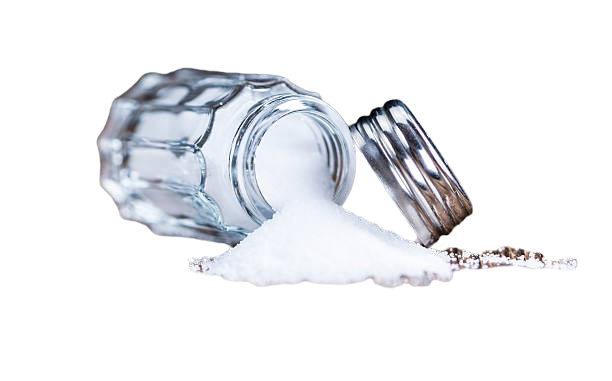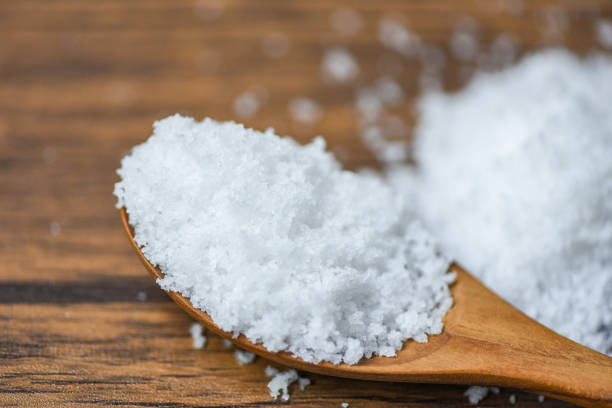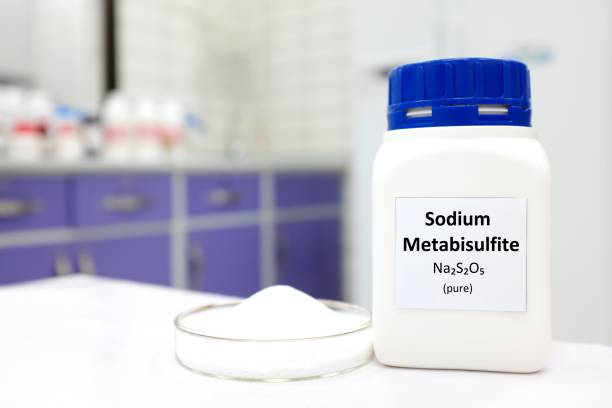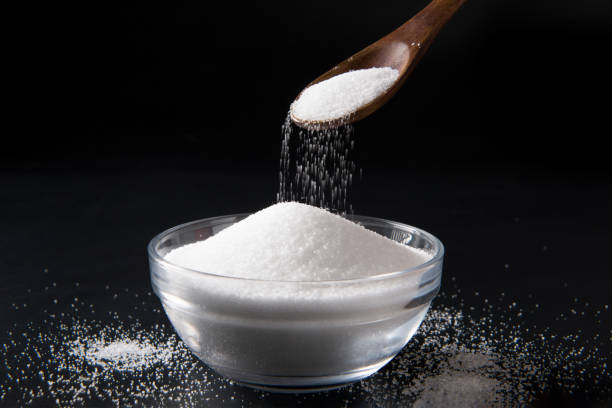Sodium Metabisulphite
Sodium metabisulphite or sodium pyrosulphite is an inorganic compound of chemical formula Na2S2O5. The substance is sometimes referred to as disodium metabisulfite. It is used as a disinfectant, antioxidant, and preservative agent. When dissolved in water it forms sodium bisulfite.

- Overview
- Applications
- Spesification
Sodium metabisulfite, also known as sodium disulfite or sodium pyrosulfite. It is an inorganic compound with the chemical formula of Na2S2O5. Its anion consists of an SO2 group linked and joined to an SO3 group, making it a hybrid of dithionite and dithionate. The negative charge of the anion is more localized in the SO3 group due to the presence of more electronegative oxygen atoms. The pungent gaseous sulfur dioxide is released when sodium metabisulfite is mixed with water or strong acids or upon heating at high temperatures. This unpleasant-smelling gas can cause breathing difficulties in individuals; hence alternatives such as odourless hydrogen peroxide are more widely used. Sodium metabisulfite, despite not being flammable, decomposes in 150°C of heat releasing toxic gasses when decomposed. It is corrosive when dissolved in water.
Manufacturing Process
Using Sodium Bisulfite Sodium metabisulfite can be manufactured using sodium bisulfite and sulfur dioxide. A solution of sodium bisulfite saturated with sulfur dioxide is allowed to evaporate, yielding sodium metabisulfite, as shown.
Using Sodium Carbonate/ Sodium Hydroxide
Sodium metabisulfite can be manufactured by treating sodium hydroxide or a suspension of sodium carbonate with sulfurdioxide-containing gases in a saturated sodium hydrogen sulfite solution. Sodium metabisulfite yielded is removed by centrifugation and dried.
Food Industry
Sodium metabisulfite is used as a preservative and antioxidant in food and is also known as E223. It may cause allergic reactions in those sensitive to sulfites, including respiratory reactions in asthmatics, anaphylaxis and other allergic reactions in sensitive individuals. Sodium metabisulfite and potassium metabisulfite are the primary ingredients in Campden tablets, used for wine and beer making.
Textile Industry
Sodium metabisulfite is used as a bleaching and dechlorination agent for bleached cotton. It is also used in the deliming process during leather processing and prevents the formation of toxic sulfide gas. It bleaches the leather and makes it soft, well-developed, tough, waterproof, anti-break, and wear-ability.
Cleaning Agent
It is commonly used in home brewing and winemaking to sanitize equipment. It is used as a cleaning agent for potable water reverse osmosis membranes in desalination systems. It is also used to remove chloramine from drinking water after treatment.
Other Application
In the photography industry, sodium metabisulfite is used to produce developer solutions and acidizing fixation baths. Concentrated sodium metabisulfite can be used to remove tree stumps. It is also used as an excipient in some tablets, such as paracetamol.
| Names | |
|---|---|
| Other names Sodium pyrosulfite Sodium disulfite | |
| Identifiers | |
CAS Number | 7681-57-4 |
3D model (JSmol) | Interactive image |
| ChEBI | CHEBI:114786 |
| ChEMBL | ChEMBL2016976 |
| ECHA InfoCard | 100.028.794 |
| EC Number | 231-673-0 |
| E number | E223 (preservatives) |
PubChem CID | 656671 |
| RTECS number | UX8225000 |
| UNII | 4VON5FNS3C |
CompTox Dashboard (EPA) | DTXSID0029684 |
InChI | |
SMILES | |
| Properties | |
Chemical formula | Na2S2O5 |
| Molar mass | 190.107 g/mol |
| Appearance | White to yellow powder |
| Odor | Faint SO2 |
| Density | 1.48 g/cm3 |
| Melting point | 170 °C (338 °F; 443 K) decomposition begins at 150 °C |
Solubility in water |
|
| Solubility | Very soluble in glycerol Slightly soluble in ethanol |



